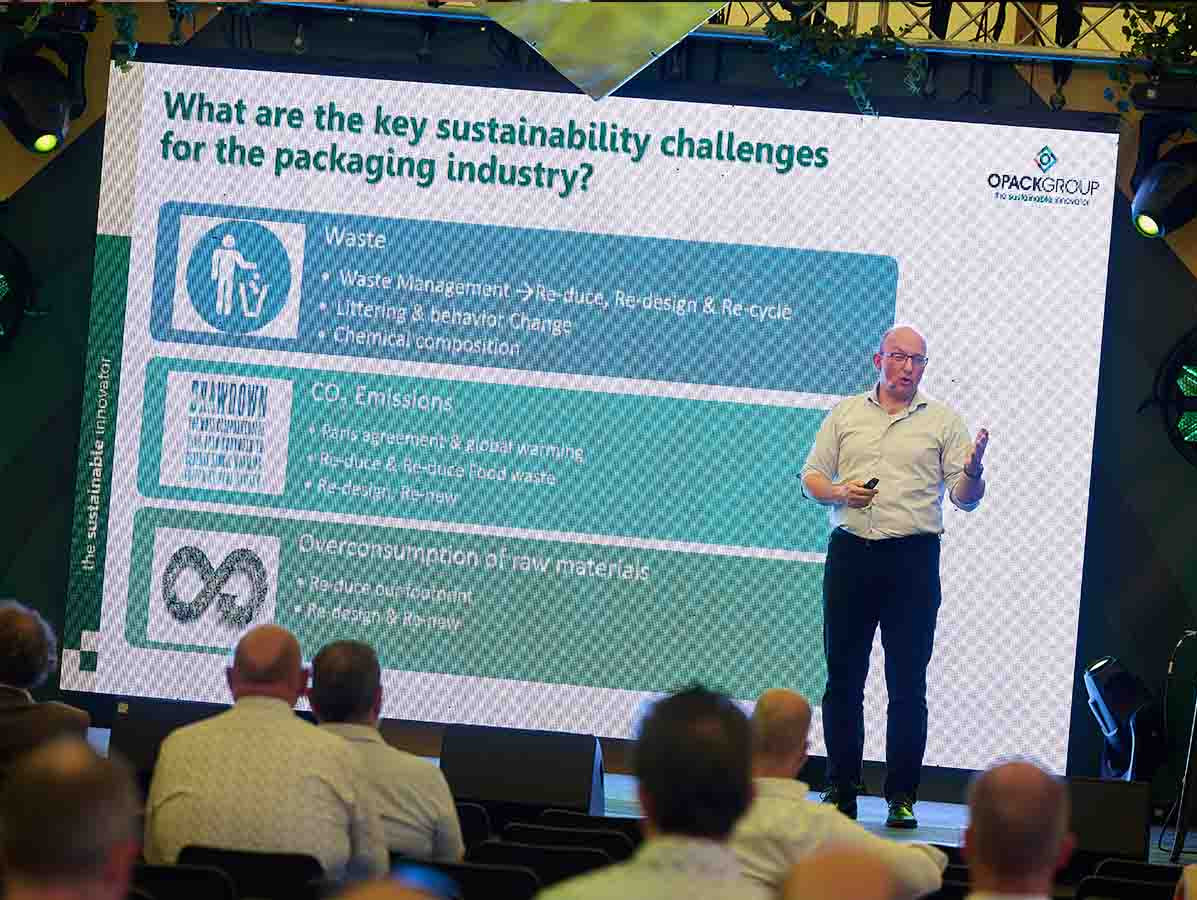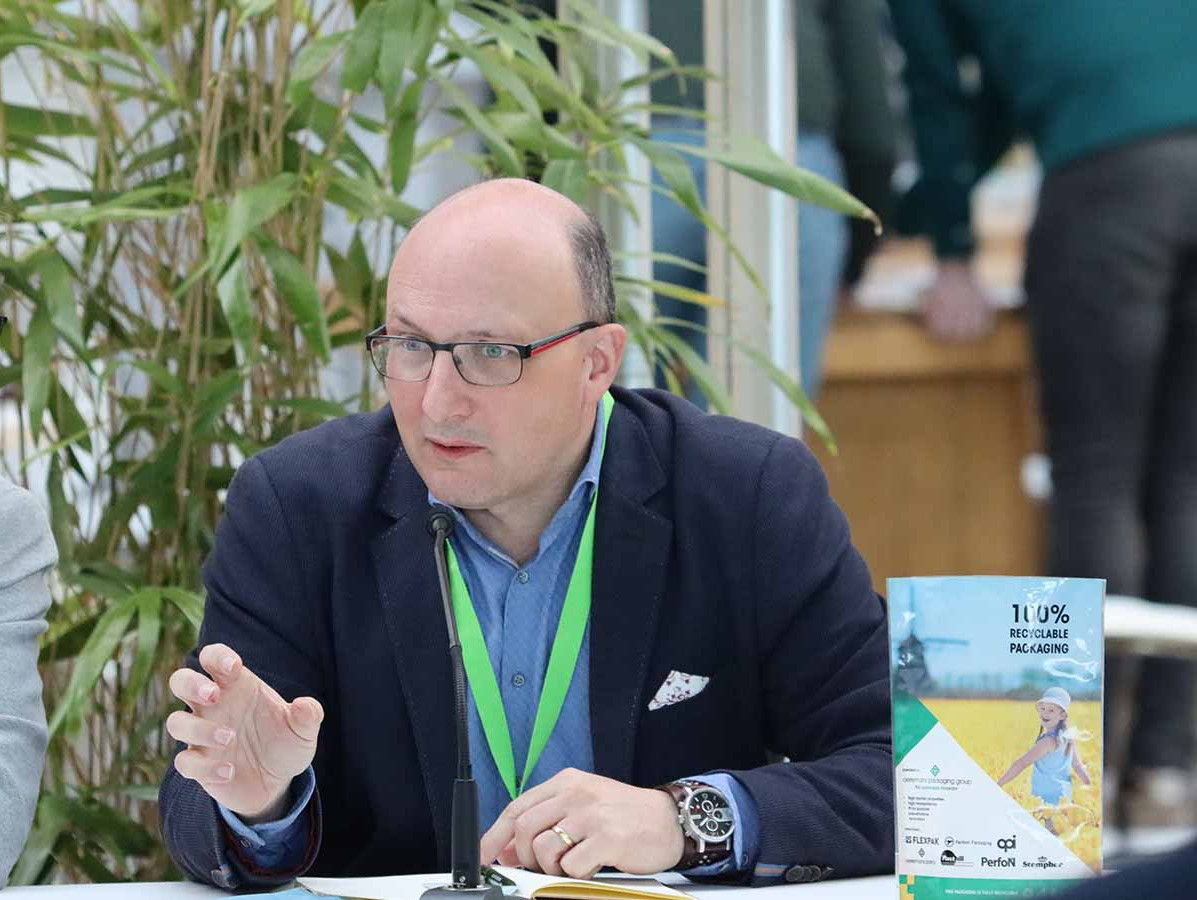
“Recyclability by design; that's the basis for future packaging,” predicts Rob Verhagen of the OPACKGROUP. “We are facing a tsunami of new legislation. Companies must therefore take action now.”
“By 2030, packaging must be recyclable AND contain a minimum amount of recycled material. These are two important legal obligations from the new Packaging and Packaging Waste Regulation (PPWR),” says Rob Verhagen, Sustainability Director of the OPACKGROUP. Like no other he knows what's happening in the packaging world.
“In anticipation of this European legislation, the Netherlands has already announced that it will soon introduce a blending obligation of recyclate or bio-based materials for plastics,” he continues. “This is described in the new National Circular Plastics Standard. All plastics introduced to the Dutch market must contain a minimum proportion of recycled or biobased material. The exact percentages per product-market combination are still under discussion. They are still low in 2027, but they will rise to as much as 30% by 2030. And there will be a clear objective for the amount of packaging material and waste brought to the market, as well as a ban on certain packaging solutions. By 2024 we will already see these changes in practice; the Waste Fund will introduce more tariff differentiations, rewarding the use of recyclate and recyclability.” So many changes and obligations; it's no wonder the average entrepreneur feels overwhelmed. Where to start?
Rob: “The biggest environmental impact lies with the packaged product. That's why we first need to look at why we are packaging. The main purpose is functionality: to protect during transport and extend shelf life to prevent waste. This is immediately followed by ‘designing for circularity’. This is not new: the ‘Essential requirements for packaging’ were formulated as early as 1994. The new Packaging & Packaging Waste Regulation simply continues from that.” The Essential requirements state that packaging must be safe, have the lowest possible environmental impact, and minimize the amount of material used. These requirements must be documented in a packaging dossier. “With the expertise of the OPACKGROUP Technology Centre (OTC), we assist market parties in gathering relevant information. My advice to (food) producers who don't yet have this dossier: don't wait any longer. Start building it today!”

“In the past, packaging was something companies just bought. Now, the choice of packaging affects the entire business operation, and the cost picture has changed,” Rob says. “The purchasing department must select the material based on the new legal requirements. The purchase price doesn't tell the whole story; perhaps the material is more expensive to purchase, but you pay a lower rate to the Waste Fund afterward. The operations department needs to know how new material runs on the packaging machines. Trial deliveries are needed to check this. Do operators need training? Do machine settings need to change? When switching from complex laminates (such as PET-PE) to a recyclable barrier packaging made of monomaterial, the temperature at which the material is processed must be lowered. This reduces energy consumption. For the Quality department, the puncture resistance and shelf life of packaging are crucial; this also needs testing. And the marketing department is considering what a more sustainable packaging means for market positioning.”
It's clear: a lot is coming at food producers. “Of course, you can wait until all the details of the legislation are finalized. But there's a good chance you'll be too late,” Rob says. “Even though it seems complicated, in essence, it's quite simple. What you need to do was already succinctly described by NRK Packaging in 2018 in the ‘Roadmap for material sustainability of plastic packaging’. The ‘Re-think plastics’ strategy lists five ‘re’s’: re-duce, re-use, re-cycle, re-design, and re-new. When you align these sustainability directions with the new legislation, there's an overlap everywhere!”
Rob explains that the OPACKGROUP has its own recycling department and ensures that recyclate is effectively used. “We've heavily invested in a new factory where we produce recyclable barrier packaging made of monomaterial, among other things. Our innovation revolves around strengthening polyethylene in a specific way, transforming the film from amorphous to crystalline. The material becomes clearer, the barrier function improves, and the puncture resistance increases.” The multi-layer monomaterial is already used for packaging a wide range of foods that previously used complex laminates. Think cheese, cookies, pet food, and bake-off rolls. Another innovation is laminating with an embossed film, resulting in a monomaterial that's 30% lighter but still very strong. This future-proof product is now patented.
“Switching to an entirely new packaging material really is a significant change,” Rob knows. “To do this correctly, all departments in your company need to work together and see the big picture. My advice for food producers is: embark on this journey now! This way, you'll be ahead of the crowd, and your change process will proceed without the stress of time pressure.”
Source: Vakblad Voedingsindustrie 2023